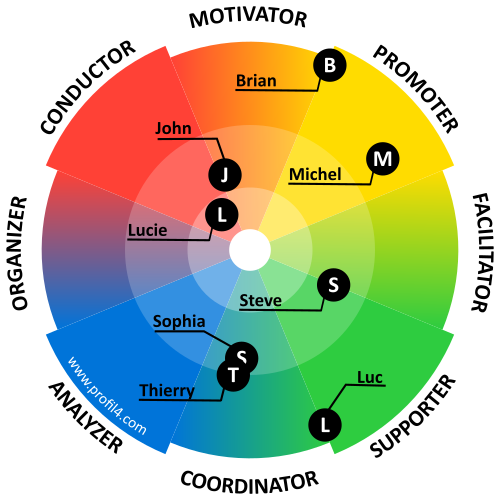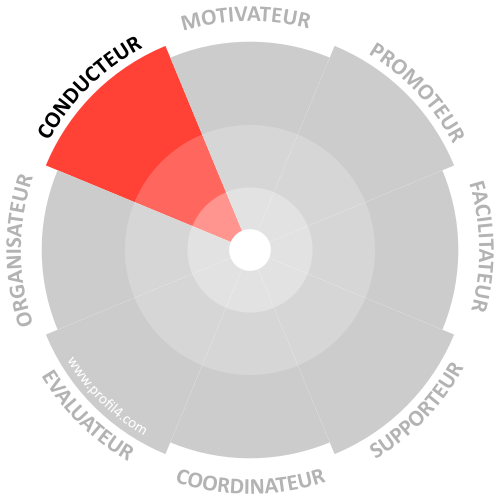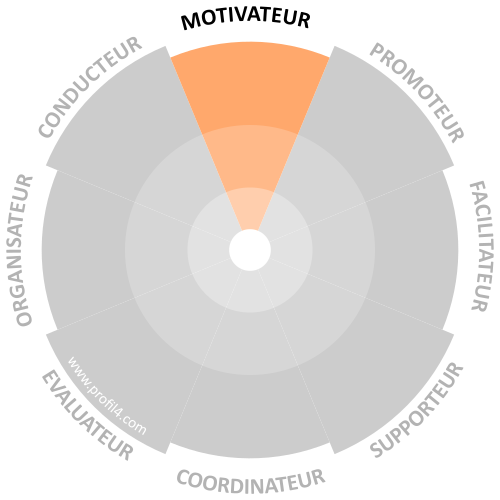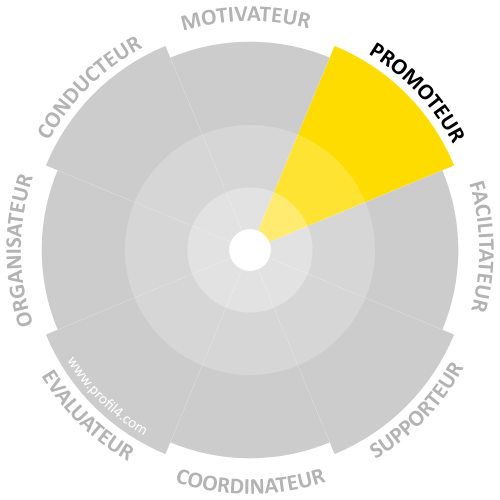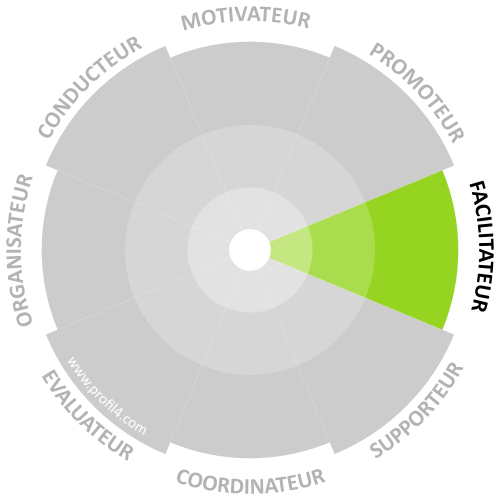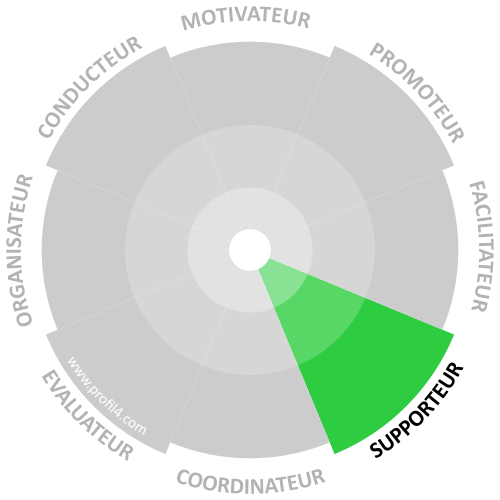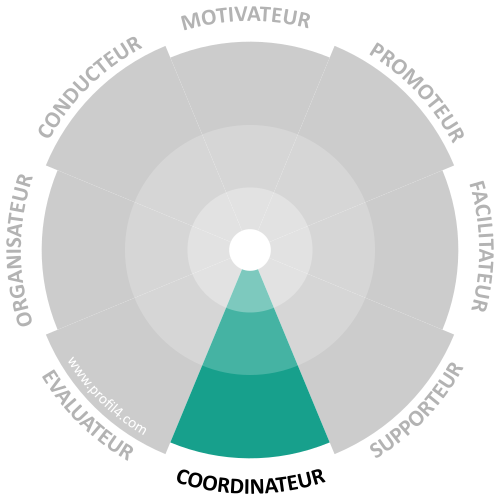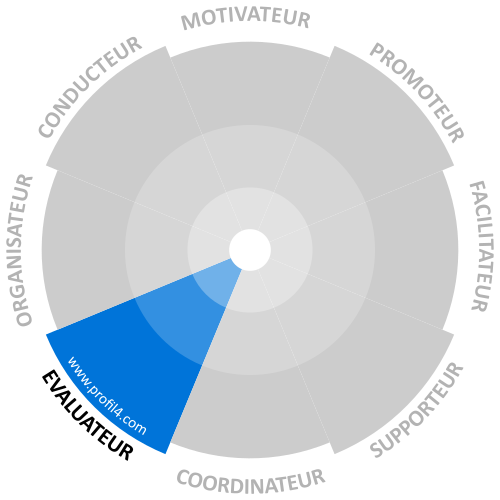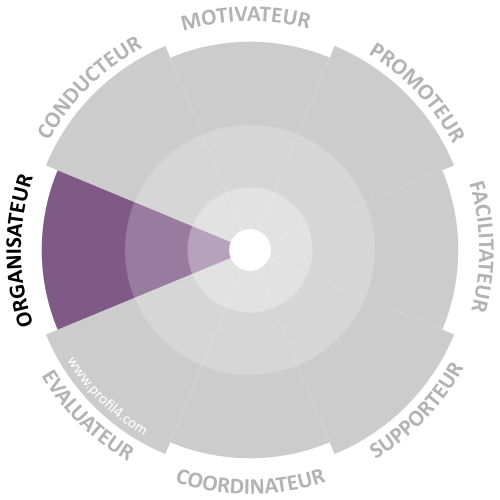DISC is an acronym which stands for Dominant, Influential, Stable and Conscientious. These four components are appropriately represented on a wheel divided into four quarters. But to go into more detail or define a team profile, these results must be refined.
The DISCp4 tendencies wheel
This wheel is made up of eight segments – Conductor, Motivator, Promoter, Facilitator, Supporter, Coordinator, Evaluator and Organizer – as well as four interlocking discs which are increasingly larger and brighter. The closer a person’s profile is to the edge of the disc, the stronger their corresponding tendencies.
In positioning team members on the tendencies wheel, we can get a feel for the overall mood and adapt our interactions with everybody.
The height tendencies
CONDUCTORS are attracted to results and challenges. They enjoy being tested. They take firm, expeditious, quick decisions. They assert their level of responsibility. Bold and self-motivated, sometimes brusque, they expect a lot of others and themselves.
MOTIVATORS have an extroverted attitude. Skilled communicators, they pass their enthusiasm along to their team and their family. They plan for the future and use their intuition to put forward new projects, even if they are risky.
PROMOTORS are attracted to social interaction. They have a huge network of contacts. Optimistic and friendly, they forge ahead and influence those around them. They are talkative and eloquent.
FACILITATORS are people-oriented. They prioritize teamwork in a harmonious environment. Good listeners, they put people first.
SUPPORTERS are attracted to harmony. They think of others before themselves and talk in a calm fashion. Paternalistic and protective, they prioritize feelings and seek consensus, but may sometimes explode.
COORDINATORS have an introverted attitude. They put up with their environment. Reliable and committed, they coordinate their work and favor diplomacy and cooperation. They care about established roles and procedures.
ANALYZER are attracted to rules and procedures. They take safe, cautious decisions after analyzing and evaluating the facts and the (quantifiable) data in a rational way. They can seem mechanical. They come up with and respect quality standards.
ORGANIZERS are task-oriented. They analyze situations and problems in an objective, result-oriented manner. They demonstrate strong organizational skills.

